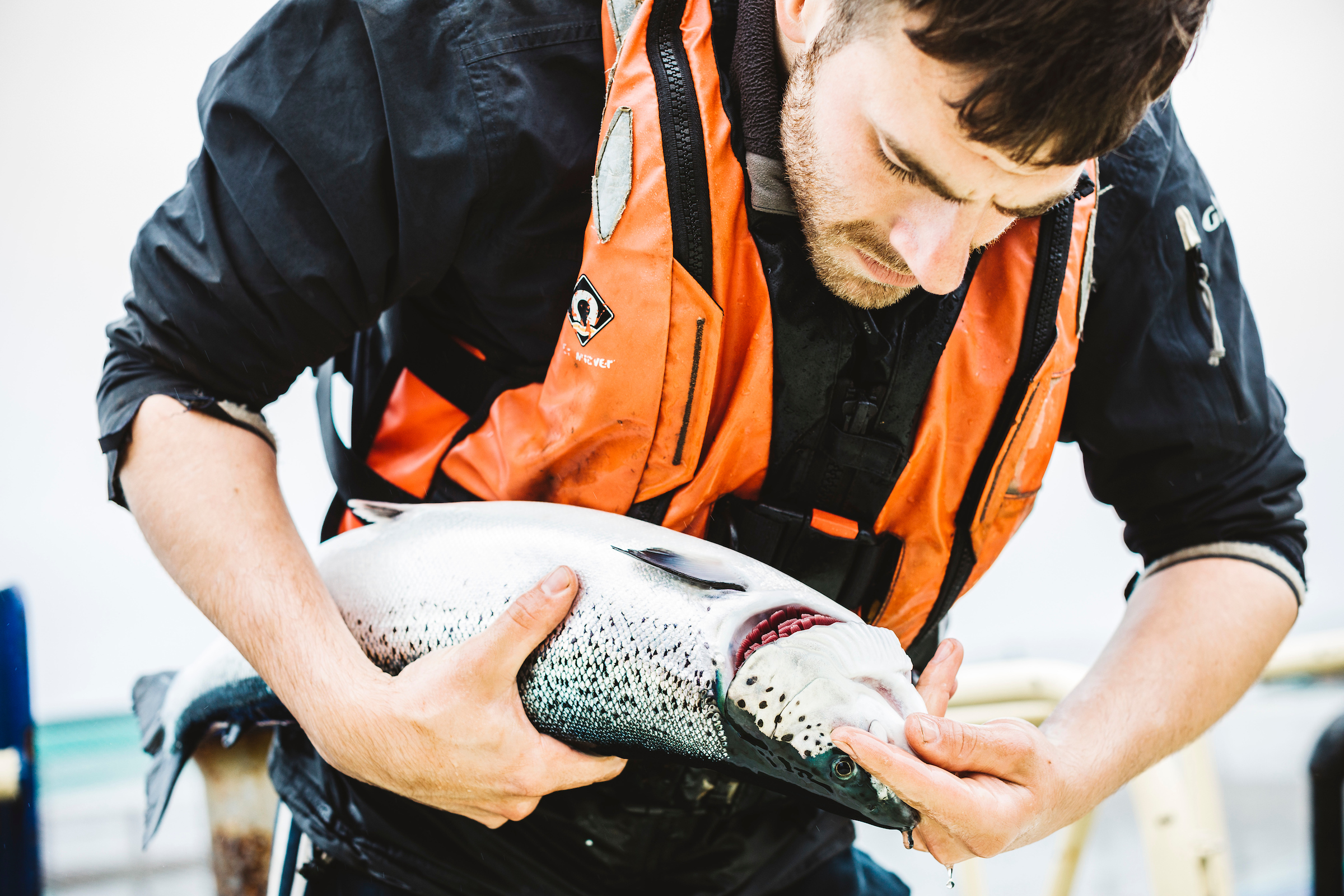Healthiest fish yet at Scottish salmon farms

SCOTLAND’S two leading salmon farmers, Marine Harvest Scotland and Scottish Sea Farms, have reported a sustained improvement in fish health during the first five months of 2018 with a marked reduction in disease related mortalities.
Figures for both salmon farmers show that the number of fish that died as a result of disease fell by more than 50 per cent between January and May compared with the previous six months.
Disease related mortality is also lower year on year, with Marine Harvest Scotland and Scottish Sea Farms reporting a reduction of 61 per cent and 27 per cent respectively compared with the first six months of 2017.
The improvement comes as welcome news following a challenging year for some farms owing to warmer than average sea surface temperatures – a trend witnessed across most parts of the world’s oceans and seas.
These warmer temperatures can encourage marine organisms to thrive where ordinarily they might not occur in abundance, posing threats to fish health in the form of harmful algal or jellyfish blooms, as experienced in 2017.
In response, both producers have invested in new technologies including:
· Environmental data monitoring equipment enabling real-time analysis of key markers such as salinity and oxygen concentration, helping farmers make swift and informed decisions;
· Underwater camera systems enabling farmers to observe salmon within the pens and respond quickly to any changes in innate behaviour;
· Innovative new netting which, in initial pilots, has helped eliminate gill disease.
Changes have also been made to farm management strategies. Marine Harvest vet and head of Fish Meritxell Diez Padrisa said: ‘Each individual farm effectively has its own micro-environment and therefore faces its own challenges.
‘However, by taking a tailored approach to farm management that is based on the local marine ecosystem and has prevention at its core, we have been able to increase the protection offered to the salmon in our care.’
Both producers are also investing in multi-million pound state-of-the-art hatcheries which will enable smolts to be grown to a larger, more robust size, thereby shortening their time at sea and lessening the chance of infection from other marine creatures.
Meanwhile, adding to the improvement in overall fish health, Marine Harvest Scotland and Scottish Sea Farms have seen significantly lower lice levels from January to May 2018.
In the case of Marine Harvest, sea lice levels were 49 per cent lower compared with the previous six months, while Scottish Sea Farms were 34 per cent lower.
Head of Fish Health at Scottish Sea Farms Ralph Bickerdike said: ‘Colder temperatures witnessed over winter 2017 have some part to play in this reduction, helping slow the growth of sea lice.
‘However, we’re also seeing the cumulative impact of investment in integrated sea lice management, including sea lice shields which reduce the number of lice entering salmon pens in the first place, use of cleaner fish which eat sea lice, and hydro and thermolicer technology which washes off and collects sea lice.
‘The result of these efforts is that we’re seeing some of our healthiest, strongest fish yet.’
The results are equally encouraging across the sector as a whole, with Scottish Salmon Producers’ Organisation figures showing that sea lice levels are at their lowest since July 2013.
Scotland’s Farmed Fish Health Framework will help to maintain the positive health trend. The joint initiative between Scotland’s salmon and trout farmers, the Scottish government and several of its agencies set out a number of measures last month in a 10-yar plan aimed at improving farmed fish health.

